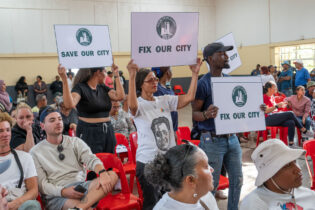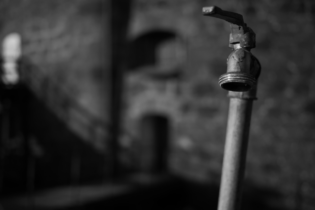Like any other valuable asset, failing to maintain lighting and telecoms infrastructure will cost you more – and it may also cost someone their personal safety or their life.
When it comes to structural integrity and electrical fitness of lighting and telecoms masts and towers, there is not enough awareness of size of the challenge we face in South Africa. Simply put, there’s a big gap in the market for this service. Infrastructure build-out continues to gain momentum in a number of sectors, which is good. However, it’s become clear to us that many organisations do not know the condition of their existing and older infrastructure, which poses a safety risk. Many of these private companies and state-owned enterprises have been minutely engaged in the final point of delivery – e.g. keeping the lights on – and have neglected to budget for ongoing maintenance to keep the lights up. What can go wrong? As a manufacturer and supplier of monopole-type steel masts for lighting and of masts and towers for the communications industry, Jasco Carrier Infrastructure is well aware of the vulnerabilities of these structures at various points in their lifecycles – and the dangers they pose. Age, environmental conditions and mechanical failure are the three chief challenges. But theft of vital components or accidental impact (such as a vehicle collision in which lighting poles are struck) can also weaken structures, encouraging corrosion and dislodging underpinnings. Light or telecoms mast failure does not just affect the bottom line, although this is a big motivator to put a maintenance schedule in place. This infrastructure needs to be maintained to ensure a safe and secure environment for people, commerce and communities. Depending on the site and the purpose of the structures, weakened or compromised infrastructure poses a safety risk to the technicians working on them as well as to workers in mines or other industrials settings, travellers on roads and highways, or people in urban and rural communities. And it’s not just about a rung collapsing or the mast actually falling over – it’s the very real danger that having no illumination or communications capabilities at night or in difficult conditions means to travellers, workers and people in communities where personal safety is an ever-present issue.Get it checked
The first step is to understand the state of existing infrastructure, deal with the critical items and then put in place the scheduled maintenance plan. For many organisations, this will mean finding the necessary budget and ensuring that it is built into all future plans. A thorough structural integrity check should include corrosion and weld condition checks; checking for missing members, loose nuts and bolts; checking the mechanical working components and mast climbing facilities; and auditing the foundation footing and anchor bolt condition using ultrasonic testing. A complete electrical operational check, which includes all electrical switchgear components, may alsoform part of the basic assessment. Organisations should ensure they use skilled professionals that are willing to issue a certificate of structural integrity upon refurbishment. Lastly, a full service record should be kept, by the organisation itself or by its service provider. Regular maintenance of infrastructure will allow organisations in the private sector, like mines and other industrial operations, to better meet occupational health and safety regulations. Similarly, maintenance of telecoms infrastructure is increasingly important to meet service level agreements with subscribers. For state-owned enterprises – in the utilities (Eskom), the transport sectors (ports, roads, harbours and railways) and municipalities – the responsibility to provide services must be backed by accountability. Annual planning and budget considerations are essential. Photo: Francois van Zyl, divisional managing director of Jasco Carrier Infrastructure
Photo: Francois van Zyl, divisional managing director of Jasco Carrier Infrastructure







